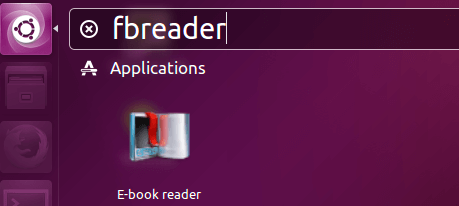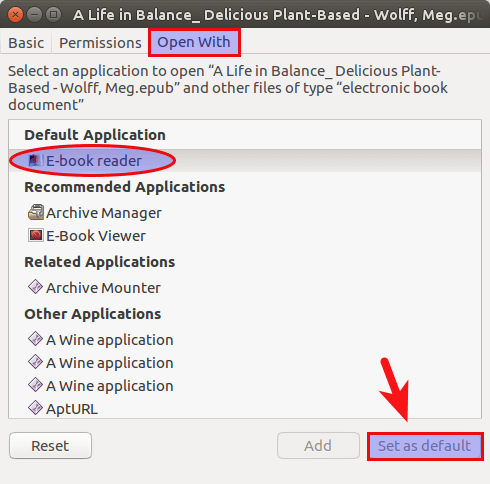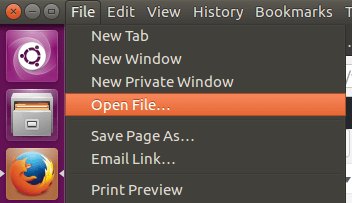4 ePub Readers to View ePub Files on Ubuntu
ePub, aka electronic publication, is a free and open e-book file format. This post introduces you 4 different ePub readers you can use to view ePub files on Ubuntu.
FBReader – the Lightweight ePub Reader
FBReader, aka Free Book Reader, is small and fast. It supports most open e-book formats such as ePub, fb2, chm, rtf, plucker, and can read zip, tar, gzip and bzip2 compressed e-book archives. FBReader is distributed under GPL so it’s included in most Linux distribution’s repository.
To install FBReader on Ubuntu, open a terminal window, copy and paste the following command.
sudo apt-get install fbreader
Once the installation is complete, search for fbreader in Unity Dash.


To set FBReader as the default program to open ePub files, right-click on the ePub file, select Properties in the context menu, then click Open With tab and select E-book reader as default.

View ePub eBooks with Calibre
To install Calibre on Ubuntu, run the following command.
sudo apt-get install calibre
Calibre is a one stop solution to all your e-book needs. Compared to FBReader, Calibre is undoubtedly heavy-weight.
View ePub Files with Okular
Okular is a universal document viewer made for KDE. But you can also install Okuar in other desktop environments like Unity, Gnome. It supports many document formats, like PDF, Postscript, DjVu, CHM, XPS, ePub and others. To install Okular on Ubuntu, run the below command.
sudo apt-get install okular okular-extra-backends
The ePub reader is included in okular-extra-backends.

View ePub eBooks with Firefox Add-on
There’s a Firefox add-on called EPUBReader. Go to Tools > Addons and search for EPUBReader to install it in Firefox. Once installed, restart Firefox. You can open your ePub books by clicking Files > Open File in Firefox.

Or right-click your ePub eBooks, select open with other applications, then select Firefox in the applications list.
Comments, questions and suggestions are always welcome. If you find this post useful, please subscribe to our free newsletter or follow us on Google+, Twitter or like our Facebook page to get more Linux tutorials.


